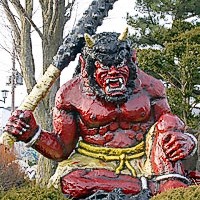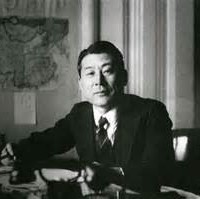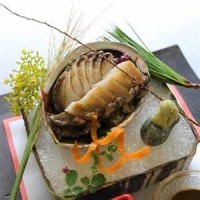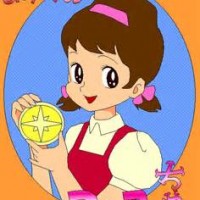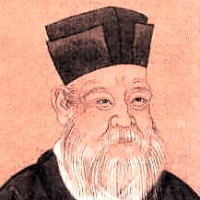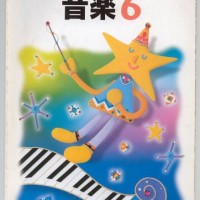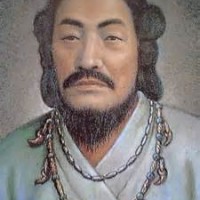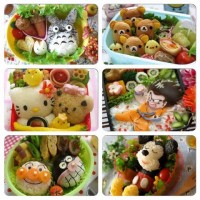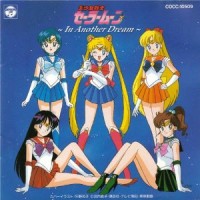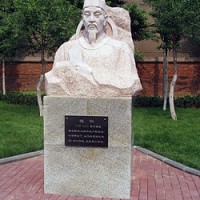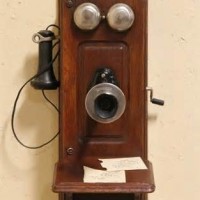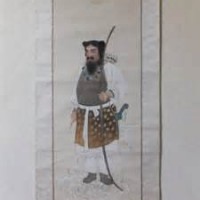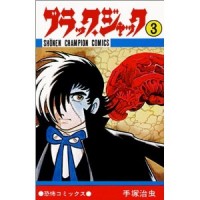blog
Tuesday: Japanese Proverb (Nihon-no Kotowaza)
10/20/2015 blog
Oni-ni Kanabo (dearu) (*Oni and Kanabo #1) (**Oni and Kanabo #2) (***Real Warrior with Kanabo) Looking up a word “Oni” in the dictionary, you will find the meaning as an ogre, a goblin, a fiend, a demon, and a devil. No matter what the definition may be, Japanese “Oni” symbolizes “the powerful.” Humans have no chance to win! On the other hand, “Kanabo” means a spiked club or truncheon used in feudal Japan as a weapon by Samurai and their retainers (https://en.wikipedia.org/wiki/Kanab%C5%8D). As you can see in the pictures above, the entity with Kanabo looks really powerful. None of their enemies would ever try to challenge – That’s the combination …
Monday: One Point Japanese Clinic
10/19/2015 blog
Yoko Answers Your Questions! (International Marriage) Question #1: Is it alright for the Japanese to have a relationship with non-Japanese? Yoko’s Answer: That is NOT the issue of “alright or not.” Nobody, even parents, cannot prohibit their children from having relationships with non-Japanese. However, I will answer your question from traditional Japanese viewpoint. The Japanese people don’t want to have (or prefer not to have) non-Japanese in-laws. Among the Japanese, non-Japanese are called “GAIJIN” and are not supposed to be their family members. Still, they have been trained to be more open about their children’s spouses since there are a lot of opportunities for their children to meet “GAIJIN” inside or outside …
Friday: NEW SERIES!! Japanese Heroes
10/16/2015 blog
Sugihara Chiune (Senpo) – Japanese Schindler (Sugihara in his office in Lithuania) Sugihara Chiune (https://en.wikipedia.org/wiki/Chiune_Sugihara) was the Vice-Consul for the Empire of Japan in Lithuania during the WWII. He had spent a colorful life even up until then, but one action he chose to take as a human being, not as a diplomat, made him an international hero as well as a legendary Japanese hero – He wrote more than 6,000 visas “by hand” for Jewish refugees when he was on duty as the Vice-Consul at Lithuania. He took this action totally against the Department of Foreign Affairs. (You can see his signature in Japanese!) (“Sugihara made the decision as a …
Thursday: Japanese Food
10/13/2015 blog
Abalone (Awabi) (Abalone Sashimi) Abalones (https://en.wikipedia.org/wiki/Haliotis) are expensive! So, the Japanese don’t have them often in Japan. Occasional Food – that is what abalones are. Usually, abalones are served in a set menu along with other seafoods or meat. Here are some examples of those: (Did you spot abalones?) Personally, I love simple sashimi of abalones. Fresh abalones with freshly prepared wasabi (horseradish) – BLISS! However, people tend to get bored of one particular food, even abalones, pretty quickly, right? So, chefs of all kinds of cuisines have to come up with a new idea of cooking abalones like below: (Abalone Steak) (Chinese Dried Abalone Cuisine) (Abalone in French Style) (Abalone …
Wednesday: Japanese Manga
10/08/2015 blog
*Himitsu no Akko-chan (Magical Compact) **Akatsuka Fujio was a comedy cartoonist, actively released his cartoons 1956 through 2002. Most of his cartoons were very successful. Due to the nature of his cartoons, they were categorized as “Manga for Boys.” However, even girls in those days found his Manga so funny that lots of Akatsuka’s works were aired on TV. All of sudden, the cartoonist famous for boys’ magazines created “Himitsu no Akko-chan” – No one knows Akko’s secret. Akko is a nickname for Atsuko (most likely!). Himitsu means secrets. What was her secret? – Akko has a magical compact. She says, “Tekumaku Mayakon, Tekumaku Mayakon…. I will turn into an adult woman …
Tuesday: Japanese Proverb (Nihon-no Kotowaza)
10/06/2015 blog
Seishin Itto Nanigotoka Narazaran (Zhu Xi: https://en.wikipedia.org/wiki/Zhu_Xi) Zhu Xi (1130 – 1200) was one of the Son Dynasty (960 – 1279) Confucians and established his own school of Confucianism in China. Confucianism was introduced to Japan and was appreciated most in Edo Period. Notable Japanese scholars include Hayashi Razan (https://en.wikipedia.org/wiki/Hayashi_Razan). (Hayashi Razan) Hayashi Razan was not a scholastic thoroughbred, but his phylosophy based on Chinese Zhu Xi school served the Tokugawa Shogunate (https://en.wikipedia.org/wiki/Tokugawa_shogunate) supremely well. The proverb above came from Zhu Xi’s analects, which was published by his disciples. In Japanese-English dictionary, it is usually translated into English this way – “Where there’s a will, there’s a way.” There is, however, slight difference …
Monday: One Point Japanese Clinic
10/05/2015 blog
Music at School (Japanese Textbook in Music for 6th Graders) I was way too naive when my oldest son started to go to school at the age of 5. I thought everything would be fine, only from my experience back in Japan, as long as he attended some public school. Soon enough I figured out I was totally WRONG!! What makes me say that is, first of all, “music (class).” The Japanese takes it for granted that they know how to read music at Kindergarten level. They know clefs, keys, sharp, flat, major, minor, and you name it. All through their school years (K-12), they “study” music at (public) school. They …
Friday: Japanese Cosmology – Kojiki (「乞食」ではなく『古事記』ですヨ!!) #33
10/04/2015 blog
Second Emperor through Ninth Emperor (Emperor Suizei: Second Emperor of Japan) The part of Kojiki on Emperor Suizei (https://en.wikipedia.org/wiki/Emperor_Suizei) through Emperor Kaika (Ninth Emperor of Japan) is extremely boring because of its nature – genealogical description. I don’t think you can stand it. So, I will describe the genealogy in detail only when the important emperor or half-god shows up. This part of Kojiki is called “Kesshi Hachidai – Only Genealogical Description but Achievements of the Eight Emperors (https://ja.wikipedia.org/wiki/%E6%AC%A0%E5%8F%B2%E5%85%AB%E4%BB%A3).” Due to this “Kesshi Hachidai,” some historians of today maintain that there didn’t exist those eight emperors and that the author of Kojiki created “Kesshi Hachidai” to make the history of Japanese Royal Family …
Thursday: Japanese Food
10/04/2015 blog
Obento (Lunch Box) (Variety of Lunch Boxes) In Japan, middle school students and high school students take their lunch boxes to school. After getting tired of Kyushoku (School Meal – https://en.wikipedia.org/wiki/School_meal) at elementary school, they are so excited to have their home made food at school. Usually leftover from the previous night are to be used. Some examples: Leftover can be beautifully arranged and rice balls or the part of rice can be impeccably decorated! With a few more ingredients, the bento box can change into ART with lots of FUN!! (Serving Suggestions!?) To avoid “boredom,” a variety of …
Wednesday: Japanese Manga
10/01/2015 blog
Seeraa Muun (Sailor Moon) Enjoy the music! –> https://youtu.be/c0Va228UhRs (Music Jacket) (TV Version) The name of this Manga’s title came from “Sailor Suit” – Uniforms for middle/high school girls shown below: (Typical School Uniform For Fall and Winter) (For Spring and Summer) Each “warrior” wears her decorated costume devised from school uniforms like above. I know they look quite different from the reality because sailor suits those worriers wear are “costumes,” not uniforms after all. It is in 1992 that Sailor Moon came into the Manga market in Japan. Immediately its Manga version became a smash hit. TV shows, theatrical performances, toys and other character goods successfully followed, building one big franchise! …
Tuesday: Japanese Proverb (Nihon-no Kotowaza)
09/29/2015 blog
Jinsei Iki-ni Kanzu (*”WeiZheng” by Taken by Fanghong – Own work.) Wei Zheng (https://en.wikipedia.org/wiki/Wei_Zheng) was one of the most important retainers in Tang Dynasty (https://en.wikipedia.org/wiki/Tang_dynasty). Wei Zheng created this phrase, which was brought in Japan. Tan Dynasty and its predecessor Sui Dynasty (https://en.wikipedia.org/wiki/Sui_dynasty) in China were the ones Japan learned the most from. What Zheng said is very true and also fitted very well in the Japanese philosophy in those days, it stayed long and is still used as one of the proverbs appreciated by numerous Japanese educated people. (**”Cheui Dynasty 581 CE” by Ian Kiu – Own work.) (***”Tang Dynasty circa 700 CE” by Ian Kiu) “Jinsei” means “one’s life.” “Iki-ni Kanzu” means …
Monday: One Point Japanese Clinic
09/29/2015 blog
Denwa-wo Kakeru (Making a phone call) (Retro Telephone) After the WWII, telephones were introduced to Japan. At first, the one in the picture above was used by the very limited number of wealthy families. It was not until mid to late 1970’s that average Japanese people have started to “buy” a line with the telephone (machine) for themselves. (Typical *”Kurodenwa” or “Black Telephone”) [*Licensed under CC 表示 2.5 via ウィキメディア・コモンズ – https://commons.wikimedia.org/wiki/File:Kurodenwa.JPG#/media/File:Kurodenwa.JPG] I said, “Buy a line.” Yes, once you bought a line with telephone machine, you acquire an asset! In those days, the Japanese paid about 70,000 yen (about US$600 in 70’s – worth $3,737.06 today) to the phone …
Friday: Japanese Cosmology – Kojiki (「乞食」ではなく『古事記』ですヨ!!) #32
09/27/2015 blog
Eldest Son’s Conspiracy (Emperor Jimmu) Emperor Jimmu passed away (The word “Kamuagaru” is only used for emperors of Japan.). His eldest son named Tagishimimi-no Mikoto (His mother is Ahirahime, to whom Emperor Jimmu had gotten married before he was enthroned.) got married to Empress of late Emperor Jimmu with the plan to make himself look like he was the legitimate successor. In those days, the marriage of this kind was not uncommon at all. Besides, Isukeyorihime was not his biological mother. (Kashihara Jingu/Shrine: https://en.wikipedia.org/wiki/Kashihara_Shrine) Just getting married to the late Emperor’s wife didn’t give him a good reason to succeed to the throne, however. Tagishimimi had a clear plan to …
Thursday: Japanese Food
09/25/2015 blog
Takoyaki and Okonomiyaki (Takoyaki served in a traditional way) (Okonomiyaki scooped by a special utensil) Takoyaki (https://en.wikipedia.org/wiki/Takoyaki) and Okonomiyaki (https://en.wikipedia.org/wiki/Okonomiyaki) are “Teppanyaki” cuisines enjoyed by Japanese commoners. If you wish, you can cook at home too, but the Japanese tend to enjoy both at speciality restaurants. The slight difference between both is Takoyaki tend to be a “carry out” while “Okonomiyaki” tend to be “eat in.” (Stop by at Takoyaki stand to get some and enjoy!) (“Must” Utensils) The reason for that might be because of these “must” utensils, which very few households own at home. They are used to cook, cut, and eat! Very convenient! As mentioned above, …
Wednesday: Japanese Manga (Cartoons)
09/24/2015 blog
Burakku Jakku (Black Jack) (Comic Version) “Burakku Jakku [Black Jack: https://en.wikipedia.org/wiki/Black_Jack_(manga)]” is a medical drama written by Tezuka Osamu(https://en.wikipedia.org/wiki/Osamu_Tezuka), author of “Tetsuwan Atomu (Astro Boy: https://en.wikipedia.org/wiki/Astro_Boy).” The original manga version was published serially in Shukan Shonen Champion (Weekly Boys’ Champion) in 1783 and ended in 1983. Nobody expected this medical “fantasy” – the genius surgeon called “Black Jack” performs the surgery without a medical license – to last this long at first. But Tezuka finally established a new genre in manga world with this totally unique character. “Black Jack” became so popular in Japan that it developed into a franchise. (Theatrical Version) (Poster) (TV Version) Interestingly Tezuka himself had a doctor’s license …

